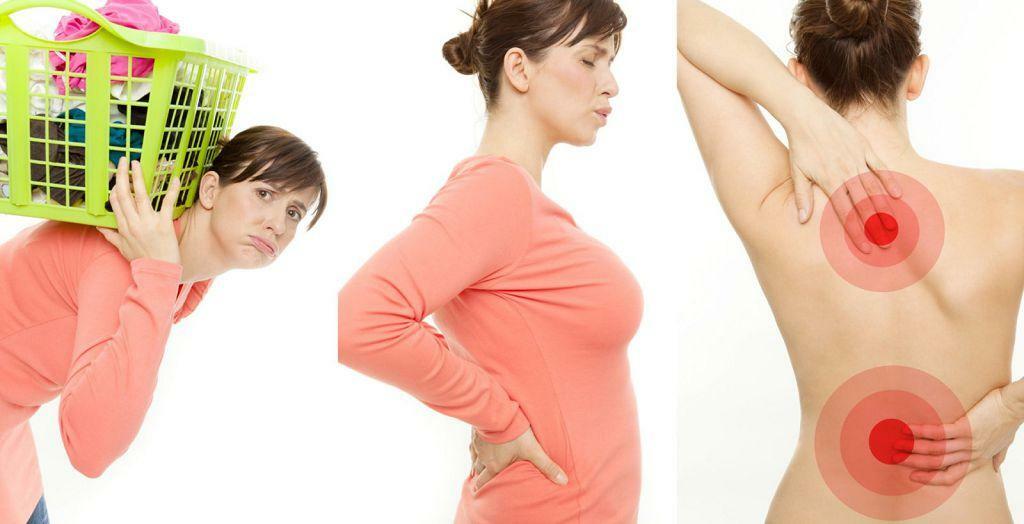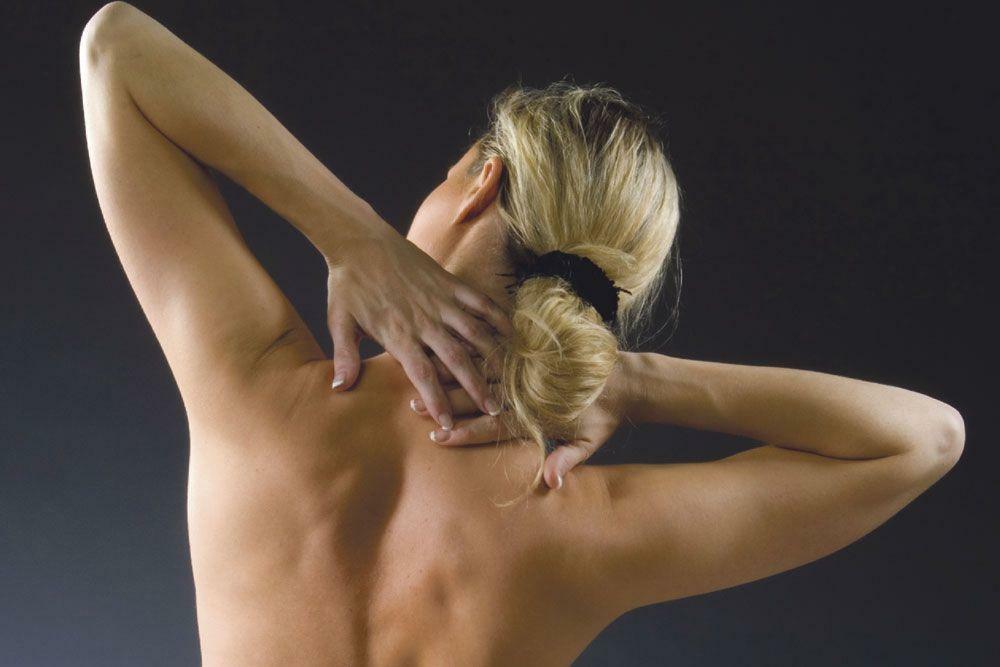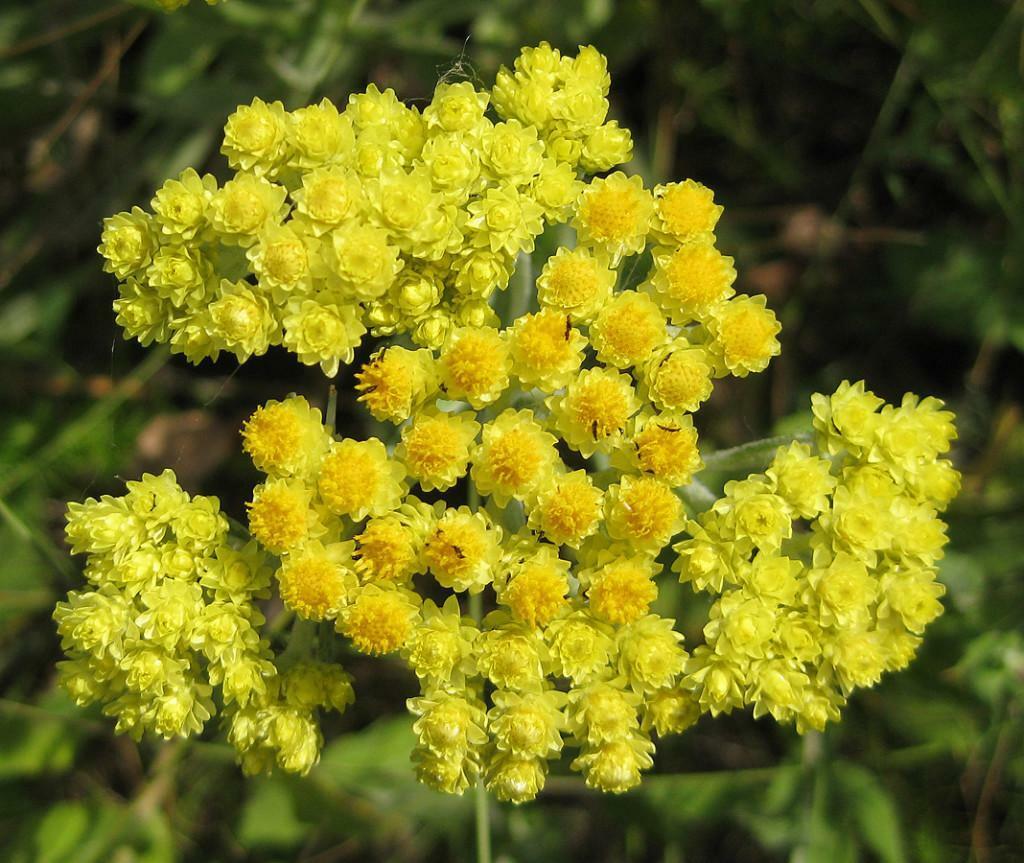Lumbosacral hernia is a complex pathological lesion that is difficult to treat. The patient feels uncomfortable all the time - unpleasant sensations with prolonged sitting, physical exertion, turns and inclinations are painful. To combat hernia of the lumbosacral department, there are many methods, but, each of them can have, both its advantages and contraindications. The most effective is considered therapeutic gymnastics, which has almost no restrictions.
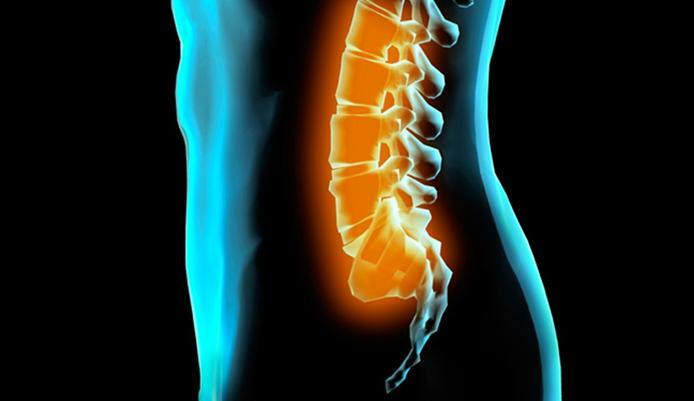
Gymnastics for hernia of the lumbosacral spine
Content of the material
- 1 A little about the disease
- 2 Symptomatic of the lumbar disc herniation
- 3 How does gymnastics help?
- 4 The correct technique for performing gymnastic exercises
- 4.1 Video - Recovery and recovery of functions in the lumbosacral spine
- 5 Exercise package
- 5.1 Exercise 1
- 5.2 Exercise 2
- 5.3 Exercise 3
- 5.4 Video - Two universal exercises with hernia inlumbar spine
- 6 Additional set of exercises
- 6.1 Possible limitations
A bit about the disease
To understand how to counteract an ailment, it is necessary to understand his clinical picture. With increasing pressure in the intervertebral discs, a degenerative process begins to develop, which leads to the formation of a hernia. The pelvic nucleus is protruded, as a result of which the discs are squeezed. It is worth noting that the lumbosacral hernia is one of the most serious forms of osteochondrosis, which is difficult to treat. The root causes of this hernia are simple - it is a prevalent sedentary lifestyle, regular weight lifting, obesity, trauma.
Symptomatology of the lumbar disc herniation
| Symptom | Short description |
|---|---|
| Painful | Soreness is temporary and can be felt by sharp turns or inclinations, with prolonged sitting, when lifting weights. You can eliminate it by taking an anesthetic. In the absence of proper therapy, the pain can acquire a permanent character |
| Muscular weakness | Lumbosacral hernia is dangerous because it can manifest itself in the muscle weakness, therefore the shuffling gait |
| is characteristic for patients. Numbness of the extremities | If the disease is not affected, the pathology actively develops and the size of the herniarapidly increase. Thus, the hernia begins to act on the nerve roots, which leads to paresthesia. Numbness can be observed in the area of the back, legs, and even groin. In addition, the patient may feel a tingling in the skin of the |
| Internal dysfunction that is located in the pelvic region of the | Due to constant pressure on the nerve roots, spontaneous emptying of the |
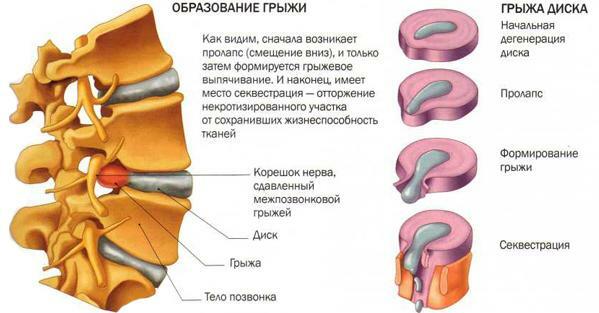
was often observed in the patients. Education of the hernia
Attention! It is not recommended to run a hernia of the lumbosacral section, because the soreness can be so strong that it will be very difficult for a person to move around. Constant lumbago will require only lying position. If the treatment is not started in time, the intervertebral hernia can lead to disability, since the pathological lesion of the hip joints occurs.
How does gymnastics help?
After understanding how dangerous the lumbosacral hernia, it is necessary to choose the right medical exercises that will bring the result. LFK with intervertebral hernia is used for:
- strengthening of the muscular corset;
- eliminating emerging spasms;
- muscle relaxation;
- improvement of the circulatory system;
- stimulation of the process of feeding the cells of the spine;
- stabilization of metabolic processes;
- reduce pain;
- unloading the spine.
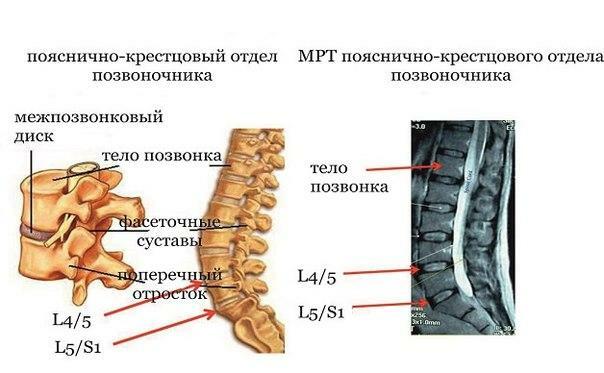
MRI of the lumbosacral spine
If you start to apply medical gymnastics at an early stage of the disease, you can prevent the growth of the hernia and prevent complications, and most importantly, the regular use of exercise therapy eliminates the need for surgical treatment.
The choice of exercises should only occur with the attending physician, as therapeutic gymnastics can not only cure, but also harm, if the performance will not take place in the proper way. For example, twisting and sharp turns can dislodge the disc and significantly worsen the clinical picture, causing the ailment to progress.
The correct technique for performing gymnastic exercises
It is strictly forbidden to perform any exercises when the intervertebral hernia is in acute form, because inflammatory reactions can only be strengthened in this way. At this stage of the disease, it is most important to eliminate the inflammatory process, and only then to start gymnastics.

Schematic image of a herniated disc
Therapeutic exercises should be held within the established rules:
- Each time, performing the exercise, you should pay attention to any changes in sensations in the body. That is, when there are painful sensations, it is necessary to stop urgently the performance of this exercise.
- The beginning of some exercises can be characterized by uncomfortable, but not painful sensations - this will eventually pass. If the subsequent times during exercise discomfort persists, then it is necessary to consult with a specialist.
- It is not recommended in the first months of applying gymnastics to perform twisting as they can only hurt.
- Gymnastic exercises for achieving the effect are required to be performed daily several times a day. Only in this way, you can quickly and painlessly strengthen your back muscles and remove uncomfortable discomfort.
- The duration of the daily workout should be at least twenty minutes.
- The main rule in the treatment of hernia gymnastics - no sudden movements. Exercise should be performed only slowly and smoothly so that the spine is not overloaded.
- You can not quickly increase the load during training. The beginning of training should be from several, but not long trainings. Then each time the patient will need to increase the load, and increase the duration of the session.
On how to improve the lumbosacral spine, you can find out by reviewing the video.
Video - Recovery and recovery of functions in the lumbosacral spine
Exercise package
If the patient is diagnosed with a hernia of the lumbosacral spine, it is recommended to perform relaxing exercises( with them you need to start gymnastics).This requires a pillow and chair. The patient lies down on the stool with his stomach, the lower limbs remain bent at the knees( the muscles must be completely relaxed).The pillow in this case is necessary, that the chair did not press in a stomach. In this position it is necessary to spend at least three to five minutes.
Standard exercises that strengthen the back muscles and improve the functionality of the spine
Exercise 1
The patient lies on the back, the legs must be bent at the knees, and the hands are along the body. The muscles of the abdomen are strained as much as possible, and breathing exercises are carried out( eight for inhalation, four for exhalation).It provides twelve approaches.
Activity 2
The patient remains lying on the floor, but the legs are no longer bent, but stretched out. Then you should lift the body, but do not tear off the legs from the floor. In this position, it is necessary to stay for ten seconds. Then smoothly return to the previous position on the back. Rest does not last more than fifteen seconds, after which the pose again repeats. Fifteen approaches are required.
Exercise 3
The patient remains in the same position, but flexes his legs slightly. Crossover movements are made. That is, the left hand is put on the right foot and vice versa. This exercise is performed in such a way that the hand is resisting the knee that stretches to the head. Such manipulations on each leg are done for ten seconds. After that, the patient returns to the starting position and rests for fifteen seconds. There are five to ten repetitions.
Recommendations! After the exercises have been performed, the muscles require relaxation. This will require lying on your back in a relaxed form for ten minutes.
For universal exercises in the diagnosis of a lumbar hernia, see here:
Video - Two universal exercises with a hernia in the lumbar spine
Additional set of exercises
| Position on the back | Position on the stomach | Position on the side |
|---|---|---|
| The patient isin a lying position on the floor with straight legs. Hands should be spread out to the sides. Then cross-shaped movements like "scissors" are made by hands. 10 approaches | The patient lies down on his stomach, spreads his legs and hands to the sides, and starts as much as possible to pull them out for fifteen seconds. 10 approaches | Being on the left side with elongated legs, it is necessary to bend the leg, which is on top of the knee and pull up to the chest. It is necessary to perform such ten repetitions. Then smoothly turn over on the right side and repeat the same actions. 5 approaches |
| The patient remains in the above position, but now the left hand is pulled to the right so that the trunk does not turn, and the pelvis does not come off the floor. Then, similar actions are performed with the right hand that stretches to the left. 10 approaches | It is necessary to do the exercise only with the use of the legs. For this, without taking the limbs off the floor, they are bred as much as possible, and then come together. There should be ten repetitions in one approach. 5 approaches | When in a lying position on the side, you should try to make describing circular movements( ten times). 5 approaches |
| The patient lies on his back, but with his legs bent. Now the exercise involves flexing the legs inwards so that the knee can touch the ankles, but neither the second leg nor the trunk moves. It is very important that there is no pain in the lumbar region, if discomfort is visible, then it is better to stop the exercise. 10 approaches | It is necessary to press the floor ten times. It is very important that the loins and back remain smooth at the same time. 5 approaches | The patient lies on his left side and raises his upper arm and leg up. Then he does the same actions, but on the other side. One approach consists of fifteen movements. 5 approaches |
This is important! The complex of exercises can not be selected independently, all medical actions must be coordinated with the attending physician.
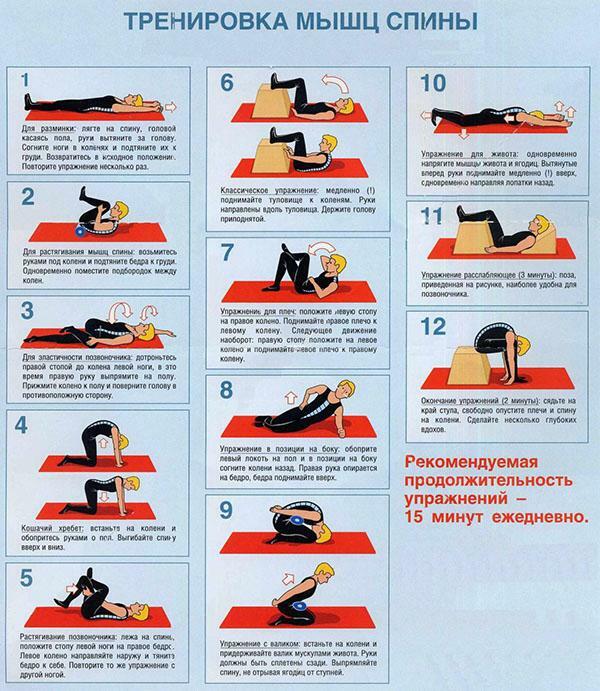
Back muscles training
Possible limitations
If the patient is diagnosed with a hernia of the lumbosacral spine, he is strictly prohibited:
- lift weights that are more than three to five kilograms. If you need to lift the load from the floor, it is very important to keep your back straight;
- should be discarded from a hyperactive lifestyle, that is, no moving sports and even swimming. All movements must be smooth;
- there should be no increased physical exertion.
In combination with curative gymnastics, alternative medicine can be used to treat an intervertebral hernia, but all methods must be approved by a doctor.

